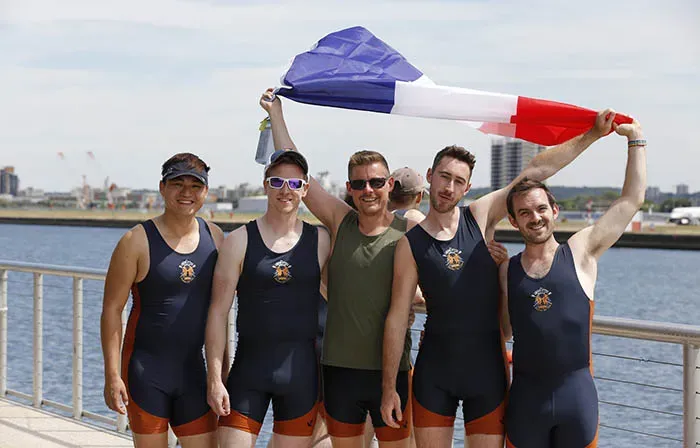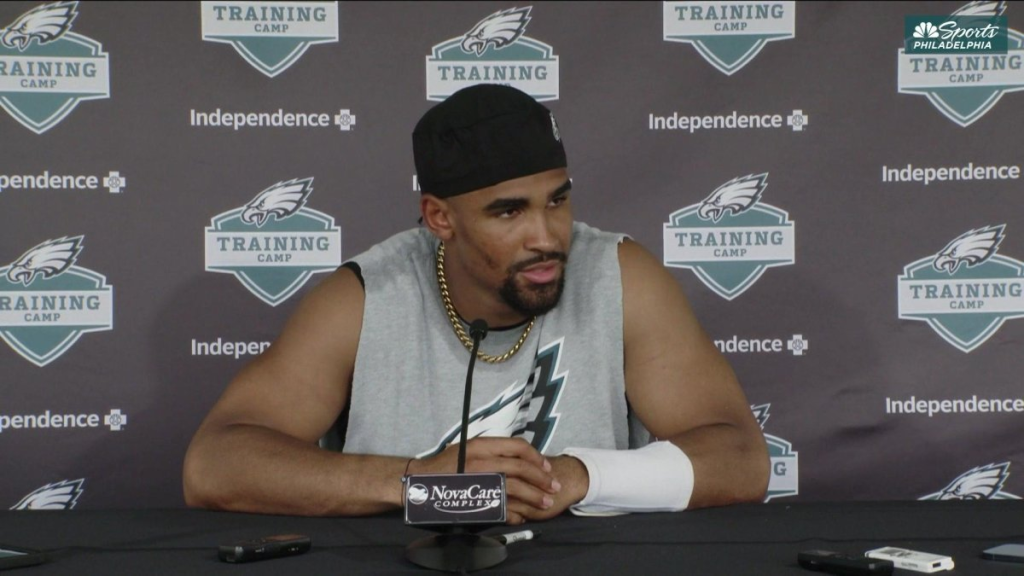In the vibrant tapestry of the gay community, the term “otter” carries a unique significance, embodying both personal identity and cultural belonging. Embracing the otter identity has become a celebrated choice among queer men, reflecting a confident acknowledgment of body positivity and self-acceptance within the bear subculture. Otters are typically defined as men with a lean physique and body hair, offering an appealing alternative to mainstream beauty standards that often marginalize different body types. This term not only highlights the diversity present in queer culture but also fosters a supportive environment for those who may feel excluded or misrepresented. As more men embrace the otter label, it reinforces the idea that attractiveness transcends conventional ideals, championing inclusivity within the gay community.
Within the dynamic landscape of queer culture, alternative identities like the “otter” emerge as crucial expressions of individuality and community. Often positioned between the well-known bear and twink identities, otters signify a blend of a fit yet hairy masculine presence that challenges societal norms regarding body image. This emerging category reflects a growing movement towards body acceptance and positivity, encouraging men of all shapes and sizes to find pride in their unique appearances. As the community continues to evolve, such terms not only enrich the conversation around body diversity but also help forge deeper connections and celebrate the myriad facets of attraction in the LGBTQ+ spectrum. Embracing these identities allows for greater representation and visibility, making room for every member of the gay community to feel valid and respected.
Understanding the Otter Identity in Queer Culture
The otter identity within the queer culture reflects a unique blend of body positivity and self-acceptance. Queer men identifying as otters celebrate their slim to average builds complemented with body hair, stepping away from traditional masculine ideals often glorified in popular media. This exploration of body types allows men to find their place within a society that may have, up until recently, prioritized hairless, muscular figures as the epitome of attraction. Otters challenge those prejudices by showcasing that desirability can be found in diverse body representations, fostering a broader narrative that encourages acceptance and love for oneself.
Moreover, the otter identity serves as a bridge within the larger bear subculture, linking those who find themselves in between the aesthetic norms of bears and twinks. This sub-group provides an essential layer of complexity and connection among queer men. As more individuals are starting to embrace this otter label, we can see a remarkable shift in stereotypes surrounding body image. Otters are increasingly seen not just as a physical description but as a declaration of solidarity within the gay community. This shift plays a crucial role in normalizing various body types and encouraging conversations around body positivity and self-worth.
The Role of Otters in the Gay Community
Otters play a crucial role in the gay community, creating a welcoming space for a range of masculine presentations that defy the conventional norms. As men within this subculture foster connections rooted in shared experience and acceptance, they contribute to a more inclusive environment. The otter identity has provided men with a way to express their individuality while simultaneously aligning with a community that cherishes authenticity. Through social events, online forums, and dating apps, otters celebrate their identities openly, creating networks that offer support and understanding.
Furthermore, the rise of the otter identity also intersects with broader movements in queer culture that advocate for diversifying standards of beauty and masculinity. By embodying body positivity, otters remind others that beauty exists in a variety of forms and that societal standards need to evolve. It’s about recognizing the diverse attractions that individuals hold secretly, as well as fostering a community where those differences can be openly discussed and appreciated. This dynamic not only reinforces self-acceptance among otters but also signifies a shift in how attraction and desirability are perceived within and outside the gay community.
The Historical Evolution of the Otter Term
The term ‘otter’ has evolved significantly since its inception during the 1980s and 1990s, reflecting changing attitudes within the gay community. Initially appearing within the bear subculture, otters were seen as those who might not fit the traditional mold of either a bear or a twink—the thick, furry figures versus the slim, hairless types. As cultural influences shifted in the decades following, the definition of what it means to be an otter expanded to include greater emphasis on body hair and the celebration of personal aesthetics. This evolution has allowed otter identity to resonate deeply across a variety of spaces in queer culture.
Moreover, the popularity of the otter label can be attributed to its rise through social media and various dating platforms that welcomed these nuanced identities. Specifically, sites and apps allowed gay men to express their individuality while finding connection with others who shared similar experiences. This accessibility played a significant role in disseminating the otter identity widely, making it a part of the queer lexicon recognized by many. As culture continues to shift, the term remains a testament to the resilience and adaptability of the gay community in fostering a sense of belonging and pride.
Body Positivity and the Otter Identity
Body positivity is a cornerstone of the otter identity, promoting self-acceptance amid societal pressures that may dictate otherwise. Otters exemplify how embracing one’s natural body—regardless of how it is traditionally viewed—can be empowering. In a culture that often glorifies hyper-masculinity and unattainable beauty standards, otters stand as a symbol of defiance. They encourage others within the gay community to reject stereotypes and affirm their desirability as it relates to their unique physique, effectively challenging the notions imposed by external societal expectations.
Furthermore, the otter community often transcends mere physicality, creating an environment where body positivity can flourish. The shared understanding among otters provides not only validation but also emotional support as they navigate societal pressures on body image. This dynamic fosters open conversations and community-building that promotes healthier perspectives on body image, pushing back against the narrative that aesthetics should dictate worth or acceptance. By celebrating their differences, otters pave the way for broader acceptance of all body types, embodying the ideal that every individual deserves respect—an essential principle of body positivity.
Cultural Celebrations of Otters and Their Impact
Cultural celebrations that include otters reaffirm their presence and significance within the gay community, showcasing diversity in body types and identities. Events like Pride parades, local drag shows, and bear gatherings often provide platforms for otters to express themselves fully, celebrating their unique identities alongside their bear and cub counterparts. These communal experiences foster a sense of validation, opening up dialogues about acceptance, love, and the importance of diversity in a queer context. When otters are celebrated, it strengthens their role in deconstructing harmful stereotypes about masculinity and desirability.
Additionally, embracing otter culture sets a precedent for future generations. As young queer individuals witness the celebration of varied body types and identities, they will feel empowered to embrace their own representations and resist societal norms that suggest otherwise. This generational shift hints at a more inclusive future where beauty standards are not dictated by a singular narrative. The ongoing celebration of otters within the gay community serves as a reminder that every identity is beautiful and valid, fostering a sense of community that defies limitation and encourages self-love.
Self-Identification and Social Acceptance as an Otter
For many gay men, self-identification as an otter signifies a reclaiming of power over how they perceive themselves and their bodies. It validates their experiences and offers language for those who have traditionally felt marginalized within the larger dialogue of masculinity. Through the process of defining themselves, otters create a narrative that is distinctly theirs—one that embraces authenticity and individuality. This kind of self-identification encourages others to ponder their body images and motivations, leading to deeper discussions about acceptance in the gay community.
The journey of social acceptance comes with challenges, especially when societal standards continuously promote a narrow view of attractiveness. Otters frequently navigate these pressures while seeking affirmation and validation from peers and potential partners. However, as they collectively share experiences in supportive spaces, they cultivate connections that foster acceptance within the community. The ability to find like-minded individuals leads to profound relationships, thereby reinforcing the notion that self-love and acceptance can thrive in a society that often tries to box individuals into conformist ideals.
Otter Representation in Media and Its Significance
Representation of otters in media plays a pivotal role in shaping public perception and acceptance of diverse body types within the gay community. As the cultural conversation evolves, more filmmakers, writers, and artists are incorporating otter identities into their works, challenging long-held stereotypes and offering viewers a richer, more complex view of masculinity. By portraying otters positively, media can encourage broader acceptance of varied aesthetic expressions while simultaneously dismantling stigmas attached to body hair and alternative body types.
Furthermore, the authenticity brought forth by otter representation enhances visibility for these individuals, allowing others in the gay community to find inspiration and comfort in their identities. This media presence can spark conversations about what it means to be masculine and beautiful in today’s society. As audiences increasingly seek authentic narratives, the representation of otters emerges not only as a celebration of identity but as a revolutionary moment in redefining what it means to exist in the queer space. These reflections are meaningful for not just otters, but for the community as a whole as they cultivate an inclusive, body-positive dialogue.
Finding Community as an Otter Man
Finding community as an otter man can be a transformative experience that fosters feelings of belonging and acceptance. The otter identity offers a nurturing space where individuals can share their stories and challenges freely, thus creating an uplifting environment. Men identify with this label not just to align themselves with peers who understand their struggles, but also to revel in the unique aspects that make them who they are. This collective of otters often forms a tight-knit community, one that provides emotional and social support typically lacked in broader societal contexts.
Moreover, connecting with fellow otters can serve as a form of resistance against mainstream standards that might alienate them. By creating safe spaces where body positivity thrives and individuality is celebrated, these communities help shape a counter-narrative against exclusion and discrimination. This camaraderie builds strong connections, allowing otters to discuss their experiences ranging from dating to societal expectations of masculinity. The sense of community is essential, fostering not just personal growth but also broader movements for acceptance within the ever-evolving landscape of queer culture.
Frequently Asked Questions
What does it mean to identify as an otter in the gay community?
Identifying as an otter in the gay community refers to a queer man who typically has a slim to average build, coupled with body and facial hair. Otters are part of the broader bear subculture, which celebrates body positivity and diversity within gay identities. This label allows individuals to embrace their appearance, fostering a sense of belonging within LGBTQ+ circles.
How did the term ‘otter’ become popular in the gay community?
The term ‘otter’ gained popularity in the gay community during the 1980s and 1990s, particularly within the bear subculture. It spread through gay magazines, online forums, and eventually dating apps. Social media played a significant role in its acceptance, helping to elevate awareness about various identities within queer culture.
Why is the otter identity significant within the bear subculture?
The otter identity is significant within the bear subculture because it provides representation for slim, hairy men who often feel marginalized within the broader gay community. By embracing the otter label, individuals can promote body positivity and foster acceptance, countering the stereotypes associated with traditional body types in LGBTQ+ culture.
What impact does identifying as an otter have on body positivity in the gay community?
Identifying as an otter positively impacts body positivity in the gay community by challenging conventional beauty standards that often favor lean, hairless bodies. It encourages acceptance of diverse body types and fosters a supportive environment where individuals can celebrate their natural selves without fear of judgment.
What role does the otter community play in queer culture?
The otter community plays a vital role in queer culture by offering a sense of belonging for those who may feel excluded from other subcultures. It promotes acceptance, connection, and emotional validation among members, creating spaces where individuals can express their identities and celebrate uniqueness within the LGBTQ+ spectrum.
How has representation of otters changed in media and society?
Representation of otters in media and society has evolved over time, with growing visibility and acceptance of body hair and diverse body types. However, mainstream media still predominantly features hairless, muscular men. The increasing dialogue around body positivity and diverse representations has helped otters gain recognition as valuable members of the gay community.
What challenges do otters face in the gay community?
Otters may face challenges such as societal pressures and stereotypes regarding body image, leading to feelings of inadequacy or alienation. These challenges are often compounded by the need for broader representation in media, making it essential for the otter community to vocalize their experiences and promote body acceptance.
In what ways can the otter identity foster a sense of pride within the LGBTQ+ community?
The otter identity can foster pride within the LGBTQ+ community by encouraging individuals to embrace their unique body types and challenge prevailing beauty norms. This acceptance fosters an inclusive environment, where otters can connect with others who share similar experiences, ultimately creating a supportive and validating community.
| Key Points |
|---|
| An ‘otter’ in the gay community refers to a man with a slim to average build, body and facial hair, and a masculine appearance. |
| The term emerged in the 1980s and 1990s within the bear subculture, gaining popularity through media and dating apps. |
| Identifying as an otter can foster a sense of belonging and community among queer men, who often face different cliques and subcultures. |
| The otter community is perceived as friendlier and less judgmental, providing a different perspective on body positivity. |
| The label also emphasizes visibility, connection, and pride within the LGBTQ+ spectrum. |
Summary
Otter in the Gay Community represents a unique identity that brings together queer men who embrace their body hair and average builds. This term not only provides a sense of belonging among its members but also challenges societal norms regarding attractiveness and body image. As the gay community continues to evolve, the otter identity plays a crucial role in promoting body positivity and acceptance, creating a culture where individuals can celebrate their uniqueness and connect with others who share similar experiences.



